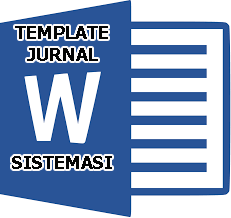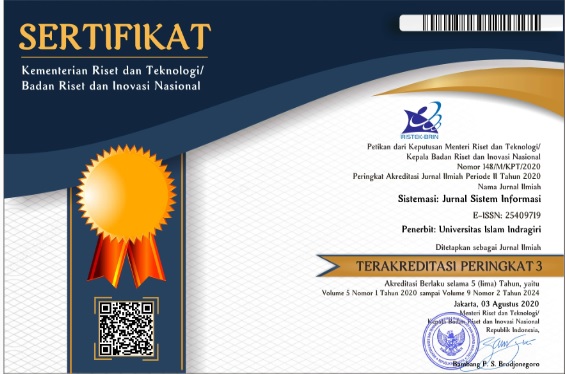Comparison of Manhattan and Chebyshev Distance Metrics in Quantum-Based K-Medoids Clustering
Abstract
Keywords
Full Text:
PDFReferences
M. Jaiswal, A. Srivastava, and T. J. Siddiqui, “Machine Learning Algorithms for Anemia Disease Prediction,” in Lecture Notes in Electrical Engineering, 2019, pp. 463–469. doi: 10.1007/978-981-13-2685-1_44.
C. Bauckhage, R. Sifa, and S. Wrobel, “Adiabatic Quantum Computing for Max-Sum Diversification,” in Proceedings of the 2020 SIAM International Conference on Data Mining, Philadelphia, PA: Society for Industrial and Applied Mathematics, 2020, pp. 343–351. doi: 10.1137/1.9781611976236.39.
A. Naik, E. Yeniaras, G. Hellstern, G. Prasad, and S. K. L. P. Vishwakarma, “From Portfolio Optimization to Quantum Blockchain and Security: A Systematic Review of Quantum Computing in Finance,” arXiv, pp. 1–64, Jun. 2023, doi: 10.48550/arXiv.2307.01155.
U. Awan, L. Hannola, A. Tandon, R. K. Goyal, and A. Dhir, “Quantum Computing Challenges in the Software Industry. A fuzzy AHP-based Approach,” Information and Software Technology, Vol. 147, No. February, p. 106896, Jul. 2022, doi: 10.1016/j.infsof.2022.106896.
T. Baidawi and Solikhun, “A Comparison of Madaline and Perceptron Algorithms on Classification with Quantum Computing Approach,” Jurnal RESTI (Rekayasa Sistem dan Teknologi Informasi), Vol. 8, No. 2, pp. 280–287, Apr. 2024, doi: 10.29207/resti.v8i2.5502.
F. F. C. Silva, P. M. S. Carvalho, and L. A. F. M. Ferreira, “A Quantum Computing Approach for Minimum Loss Problems in Electrical Distribution Networks,” Scientific Reports, Vol. 13, No. 1, p. 10777, Jul. 2023, doi: 10.1038/s41598-023-37293-9.
U. S, “Penerapan Data Mining dengan mengimplementasikan Algoritma K-Means dalam Proses Clustering untuk Pengelompokan Mahasiswa Calon Penerima Beasiswa KIP,” Building of Informatics, Technology and Science (BITS), Vol. 5, No. 1, p. 70−85, Jun. 2023, doi: 10.47065/bits.v5i1.3411.
B. Hartono, S. Eniyati, and K. Hadiono, “Perbandingan Metode Perhitungan Jarak pada Nilai Centroid dan Pengelompokan Data menggunakan K-Means Clustering,” Jurnal Sistem Komputer dan Informatika (JSON), Vol. 4, No. 3, p. 503, Mar. 2023, doi: 10.30865/json.v4i3.6021.
M. R. Muttaqin and M. Defriani, “Algoritma K-Means untuk Pengelompokan Topik Skripsi Mahasiswa,” ILKOM Jurnal Ilmiah, Vol. 12, No. 2, pp. 121–129, 2020, doi: 10.33096/ilkom.v12i2.542.121-129.
. F., felix toknady Kesuma, and S. P. Tamba, “Penerapan Data Mining untuk menentukan Penjualan Sparepart Toyota dengan Metode K-Means Clustering,” Jurnal Sistem Informasi dan Ilmu Komputer Prima(JUSIKOM PRIMA), Vol. 2, No. 2, pp. 67–72, Aug. 2020, doi: 10.34012/jusikom.v2i2.376.
V. A. Ekasetya and A. Jananto, “Klusterisasi Optimal dengan Elbow Method untuk Pengelompokan Data Kecelakaan Lalu Lintas di Kota Semarang,” Jurnal Dinamika Informatika, Vol. 12, No. 1, pp. 20–28, Aug. 2020, doi: 10.35315/informatika.v12i1.8159.
I. N. M. Adiputra, “Clustering Penyakit DBD pada Rumah Sakit Dharma Kerti menggunakan Algoritma K-Means,” INSERT : Information System and Emerging Technology Journal, Vol. 2, No. 2, pp. 99–105, Jan. 2022, doi: 10.23887/insert.v2i2.41673.
Y. Wibowo, “Penerapan Data Mining Dalam Pengelompokan Data Member Card Mitra10 untuk meningkatkan Rewards terhadap Konsumen dengan Metode Fuzzy Subtractive Clustering,” TIN: Terapan Informatika Nusantara, Vol. 2, No. 8, pp. 471–475, Jan. 2022, doi: 10.47065/tin.v2i8.993.
K. Rizal; Aidilof, Hafizh Al Kautsar; , Mukhlis; Nur, “Penerapan Algoritma K-Medoid dalam Perbandingan Daya Serap Akademik Siswa Sekolah Perkotaan dan Sekolah Pedesaan selama Masa Pandemi,” Jurnal Tekno Kompak, Vol. 1, No. 1, pp. 6–13, 2021.
A. Rohmah Zaidah, C. Indira Septiarani, M. Sholikhatun Nisa, A. Yusuf, and N. Wahyudi, “Komparasi Algoritma K-Means, K-Medoid, Agglomeartive Clustering terhadap Genre Spotify,” Jurnal Ilmiah Ilmu Komputer, Vol. 7, No. 1, pp. 49–54, 2021, doi: 10.35329/jiik.v7i1.186.
W. AS, M. K. Aidid, and M. Nusrang, “Pengelompokan Kabupaten/Kota Provinsi Sulawesi Selatan dan Barat berdasarkan Angka Partisipasi Pendidikan SMA/SMK/MA menggunakan K-Medoid dan CLARA,” VARIANSI: Journal of Statistics and Its application on Teaching and Research, Vol. 1, No. 3, p. 48, Dec. 2019, doi: 10.35580/variansiunm12899.
I. Irwan, M. S. Wahyuni, S. Sulaiman, and A. M. Mu’adz, “Analisis K-Medoid untuk Pemetaan Tingkat Pencemaran Udara di Provinsi Sulawesi Selatan,” Journal of Mathematics Computations and Statistics, Vol. 5, No. 2, p. 106, Oct. 2022, doi: 10.35580/jmathcos.v5i2.38215.
G. P. I.R, A. Aziz, and M. P. T.S, “Implementasi Euclidean dan Chebyshev Distance pada K-Medoids Clustering,” JATI (Jurnal Mahasiswa Teknik Informatika), Vol. 6, No. 2, pp. 710–715, 2022, doi: 10.36040/jati.v6i2.5443.
F. Fathurrahman, S. Harini, and R. Kusumawati, “Evaluasi Clustering K-Means dan K-Medoid pada Persebaran Covid-19 di Indonesia dengan Metode Davies-Bouldin Index (DBI),” Jurnal Mnemonic, Vol. 6, No. 2, pp. 117–128, Oct. 2023, doi: 10.36040/mnemonic.v6i2.6642.
Y. Miftahuddin, S. Umaroh, and F. R. Karim, “Perbandingan Metode Perhitungan Jarak Euclidean, Haversine, dan Manhattan dalam Penentuan Posisi Karyawan,” Jurnal Tekno Insentif, Vol. 14, No. 2, pp. 69–77, Aug. 2020, doi: 10.36787/jti.v14i2.270.
M. Soni, N. Rahaningsih, and R. Danar Dana, “Komparasi Algoritma K-Means dan K-Medoids Clustering pada Data Penyebaran Kasus HIV di Provinsi Jawa Barat,” JATI (Jurnal Mahasiswa Teknik Informatika), Vol. 7, No. 6, pp. 3766–3772, Feb. 2024, doi: 10.36040/jati.v7i6.8274.
H. Ramdan, A. Gunawan, and G. Gunawan, “Analisis Pengaruh Kardiovaskular dalam Kasus Covid-19 terhadap Obesitas menggunakan Metode K-Medoid,” Indonesian Journal Computer Science, Vol. 3, No. 1, pp. 16–24, Apr. 2024, doi: 10.31294/ijcs.v3i1.2558.
S. Wulandari and N. Dwitiyanti, “Implementasi Algoritma Clustering Partitioning Around Medoid (PAM) dalam Clustering Virus MERS-Cov,” STRING (Satuan Tulisan Riset dan Inovasi Teknologi), Vol. 5, No. 1, p. 70, Aug. 2020, doi: 10.30998/string.v5i1.6469.
U. R. Gurning and M. Mustakim, “Penerapan Algoritma K-Means dan K-Medoid untuk Pengelompokkan Data Pasien Covid-19,” Building of Informatics, Technology and Science (BITS), Vol. 3, No. 1, pp. 48–55, Jun. 2021, doi: 10.47065/bits.v3i1.1003.
K. Saravananathan and T. Velmurugan, “Quality Based Analysis of Clustering Algorithms using Diabetes Data for the Prediction of Disease,” International Journal of Innovative Technology and Exploring Engineering, Vol. 8, No. 11S2, pp. 448–452, Oct. 2019, doi: 10.35940/ijitee.K1072.09811S219.
DOI: https://doi.org/10.32520/stmsi.v14i4.5193
Article Metrics
Abstract view : 485 timesPDF - 75 times
Refbacks
- There are currently no refbacks.

This work is licensed under a Creative Commons Attribution-ShareAlike 4.0 International License.









